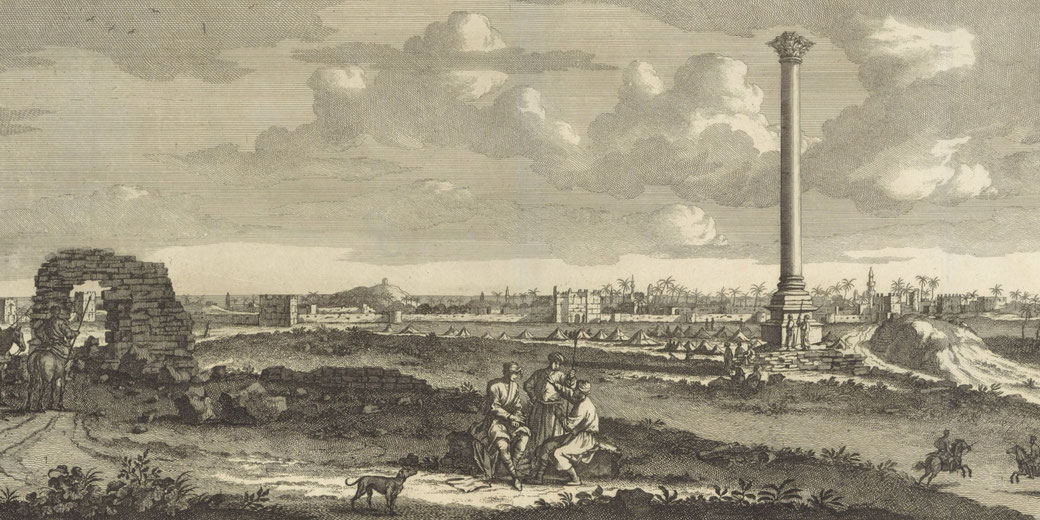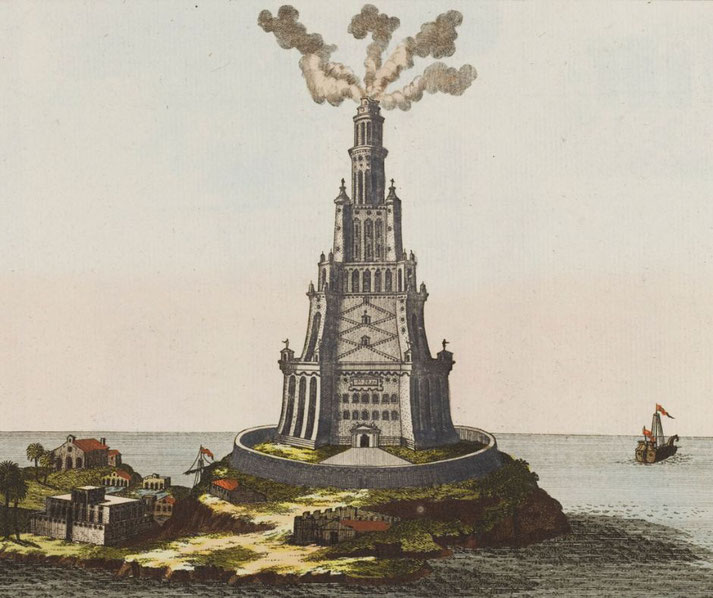Why Alexandria was the most important city in the ancient world

The ancient city of Alexandria was once the jewel of the ancient world. Originally established by Alexander the Great himself, it quickly became a crucial Mediterranean trading hub.
Thinkers from all across the Mediterranean flocked to its institutions and made remarkable discoveries in the fields of science, culture, and politics.
But at each stage, a turbulent history of social and religious unrest always threatened to undermine the tenuous success of Alexander’s city.
The importance of Alexandria's location
Alexander was strategically situated on the Mediterranean coast of Egypt. It lay between the great Nile delta and the waters of the sea, a location that enabled it to thrive as a maritime hub.
Thanks to this ideal location, the city came to dominate many of the key ancient trade routes, controlling valuable resources from the silks of the East to the grains of Egypt itself.
The original decision for where to build this city was made by Alexander the Great in 331 BCE.
During his conquest of the Persian Empire, while he was consolidating his newly seized province of Egypt, the Macedonian king was keenly aware that the region lacked a major coastal city in the north.
Ancient writers even state that Alexander provided a full street plan for his new city before he departed Egypt to continue his war.
In his absence, engineers in Egypt started making the plans a reality. The city quickly flourished under the rule of Alexander's general, Ptolemy I Soter, who declared himself Pharaoh in 305 BCE, the first ruler of the new Ptolemaic dynasty.
The genius of Alexandria's planning and design
The layout of Alexandria was to be an example of Hellenistic urban design. It had wide, straight streets laid out in a grid pattern, which contrasted sharply with the typically chaotic arrangements of older cities in the region.
In addition, the city had dedicated marketplaces, opulent palaces, and impressively large public spaces for the population to enjoy.
The most famous though, was the Pharos lighthouse, one of the Seven Wonders of the Ancient World.
Surrounding the city center were lush public gardens and temples dedicated to various gods: both Egyptian and Greek.
Perhaps the most significant was the temple of Serapis, which was constructed by the Ptolemies for their newly created god.
This figure, called Serapis, was designed as a fusion of Greek and Egyptian religious practices, which they hoped would help unify the city’s diverse population.
Alexandria developed an international reputation as a centre of cultural and scientific excellence.
This was due to the establishment of the Great Library of Alexandria, which housed hundreds of thousands of scrolls, filled with knowledge that had been collected from around the known world.
It reportedly covered a variety of genres, from literature and philosophy to science and medicine.
Next to the Library was the Museum, or Musaeum. This was not a ‘museum’ in the modern sense, but a universal institute dedicated to the Muses, the Greek goddesses of arts and sciences.
This institution attracted scholars from across the Mediterranean, who came to study and add to its extensive collections.
The incredible wealth that flowed into the city
The city's port was one of the largest in the ancient world, and it managed vast quantities of merchandise.
This included grain, papyrus, and luxury items like spices and silk. By the first century BCE, Alexandria was handling over 500,000 tons of wheat annually, a staple that was crucial for feeding the population of Rome.
This immense trade activity was supported by sophisticated banking and financial systems.
For instance, the city's traders utilized a complex system of credit and loans to finance long-distance trade ventures.
Alexandria even minted its own coins, which were recognized across the Hellenistic world for their reliable value.
Additionally, the city levied duties on any goods passing through its ports, adding a significant revenue stream that bolstered its economic stability.
This massive trading hub attracted a culturally diverse workforce. Skilled craftsmen and laborers drove the local manufacturing sectors, particularly in textiles and metalwork.
At one point, the production and export of glassware, particularly Alexandria's prized colored glass, was sent as far afield as Asia.

The different religious groups in Alexandria
As a result of the intellectual and trade networks, Alexandria became a melting pot of cultures and religions.
Its population included Egyptians, Greeks, Jews, and later Romans, each bringing with them their own customs and beliefs.
The Greek influence was the most predominant, especially in the ruling elite and the city’s cultural expressions.
However, local Egyptian religious practices remained integral.
Alongside Serapis, some of the largest temple complexes were dedicated to Isis and other Egyptian gods, which stood near sanctuaries honoring Greek gods like Zeus and Dionysus.
In addition, the Jewish community in Alexandria was quite significant, numbering in the tens of thousands at one point in its history.
This community famously produced the Septuagint, the Greek translation of the Hebrew Bible, which was a monumental cultural achievement of the time.
The famous people who called Alexandria home
Over the centuries, some of the most influential and powerful people in the ancient world called Alexandria their home.
The most well-known was Cleopatra VII, the last pharaoh of the Ptolemaic dynasty.
Her political alliances with Roman leaders like Julius Caesar and Mark Antony saw them visit and live in the city as well.
Among the luminaries who contributed to its scholarly atmosphere was Euclid, often referred to as the 'father of geometry.'
His work, "Elements," laid the foundational principles of what is now taught in schools worldwide as Euclidean geometry.
This treatise not only influenced mathematics but also the development of logic and philosophy.
At the same time, the city was a significant site for medical advancements, with Herophilus, the 'father of anatomy,' performing public dissections and challenging preconceived notions about human physiology.
Later in its history, Hypatia was also a resident. She was a renowned philosopher and mathematician who was a revered teacher, scholar and practitioner of Neoplatonism.
She became famous for engaging with students and thinkers from various cultural backgrounds.
However, her tragic death was brought about by political and religious conflict between different cultural groups.
In ancient times, the most famous member of the city was Eratosthenes. He became the chief librarian in 240 BCE and famously calculated the Earth's circumference with remarkable accuracy using the angles of the sun's rays and the distance between two points in Egypt.
Why Alexandria fell into decline
Alexandria's gradual decline in importance began after its conquest by Rome in 30 BCE, following the death of Cleopatra VII.
By the time of the Christianization of the Roman Empire under Constantine in the early 4th century, the religious landscape of Alexandria began to transform significantly.
In 391 CE, the violent destruction of the Serapeum, a temple dedicated to Serapis, marked a decisive turn towards a predominantly Christian city.
This act was part of a wider pattern of religious strife and transformation across the empire.
Then, the Arab conquest of Alexandria in 641 CE sealed the city's fate as a diminished outpost in the Islamic world.
Under Islamic rule, the city's commercial activities were overshadowed by new Islamic centers such as Fustat and later Cairo.
Nevertheless, Alexandria endured as a modest urban center, until it once more became a large city in the modern world.
Its once-glorious past is still echoed in its persistent vibrant cultural and economic life.
What do you need help with?
Download ready-to-use digital learning resources
Copyright © History Skills 2014-2025.
Contact via email
With the exception of links to external sites, some historical sources and extracts from specific publications, all content on this website is copyrighted by History Skills. This content may not be copied, republished or redistributed without written permission from the website creator. Please use the Contact page to obtain relevant permission.





